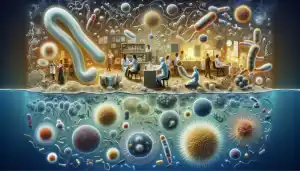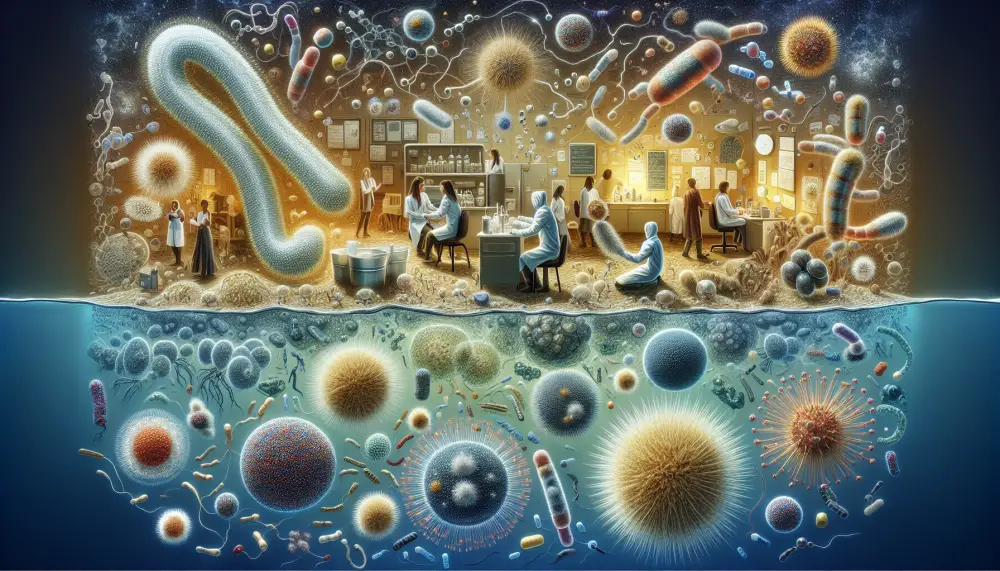Microbes: Nature's Hidden Detoxifiers of Our Atmosphere


Microbes: Nature’s Hidden Detoxifiers of Our Atmosphere
30 January 2025
A groundbreaking study by Melbourne researchers has unveiled crucial insights into how microbes play a pivotal role in purifying our atmosphere by consuming vast amounts of carbon monoxide (CO). This discovery highlights the incredible power of microscopic organisms in maintaining planetary health.
Microbes and Carbon Monoxide Detoxification
Each year, over two billion tonnes of carbon monoxide are released into the Earth’s atmosphere from natural and human-made sources. Fortunately, microbes step in as nature’s detoxifiers, consuming approximately 250 million tonnes of this toxic gas and converting it into safer compounds.
A research team led by Monash University, in collaboration with the University of Melbourne, has published their findings in Nature Chemical Biology, demonstrating how microbes achieve this feat at the atomic level. Central to this process is a specialized enzyme known as carbon monoxide dehydrogenase (CO dehydrogenase), which allows microbes to extract energy from CO while simultaneously reducing atmospheric pollution.
Unlocking the Microbial Mechanism
Co-first author Ashleigh Kropp, from the Monash Biomedicine Discovery Institute’s (BDI) Greening Lab and the University of Melbourne’s Grinter Lab, explained that this study marks the first time scientists have observed precisely how this enzyme facilitates CO absorption and energy conversion in microbial cells.
“This enzyme is a vital component of trillions of microbes found in our soils and waters,” Ms. Kropp said. “Although these organisms use CO as a survival mechanism, they inadvertently contribute to environmental detoxification, making the air we breathe safer.”
Dr. David Gillett, co-first author and a PhD researcher from the Greening Lab, emphasized the evolutionary ingenuity of microbes. “This is a perfect example of how life adapts to turn a harmful compound into a beneficial resource,” he said. “These microbes help cleanse our atmosphere, mitigating pollution-related health risks and indirectly slowing global warming.”
Broader Implications of the Discovery
While this finding may not directly lead to new CO monitoring or emission reduction technologies, it significantly deepens our understanding of atmospheric regulation and how environmental systems might respond to future changes.
Professor Chris Greening, co-senior author and head of BDI’s Global Change Program, highlighted the broader significance of microbial life. “Microbes perform countless essential functions for both human and planetary health,” he said. “Despite their microscopic size, they produce half the oxygen we breathe and neutralize harmful pollutants like CO. Recognizing their role is key to understanding our own survival.”
The Power of Microbes
Microbes, also known as microorganisms, exist in water, soil, air, and even within the human body. While some can cause disease, many are vital for health and environmental balance. The most common types include bacteria, viruses, and fungi, each playing unique roles in ecosystems and human life.
This study, published under the title Quinone Extraction Drives Atmospheric Carbon Monoxide Oxidation in Bacteria, further cements the indispensable role of microbes in sustaining life on Earth.
Your Future in Scientific Discovery
Understanding the impact of microbiology on our environment opens doors to exciting careers in biomedicine, environmental science, and biotechnology. If you’re inspired by discoveries like this and want to be part of the next generation of scientific breakthroughs, MyCourseFinder.com can help you find the best academic programs suited to your goals. Explore top courses in environmental science, microbiology, and biotechnology today and take the first step toward a career in transforming our world for the better.










